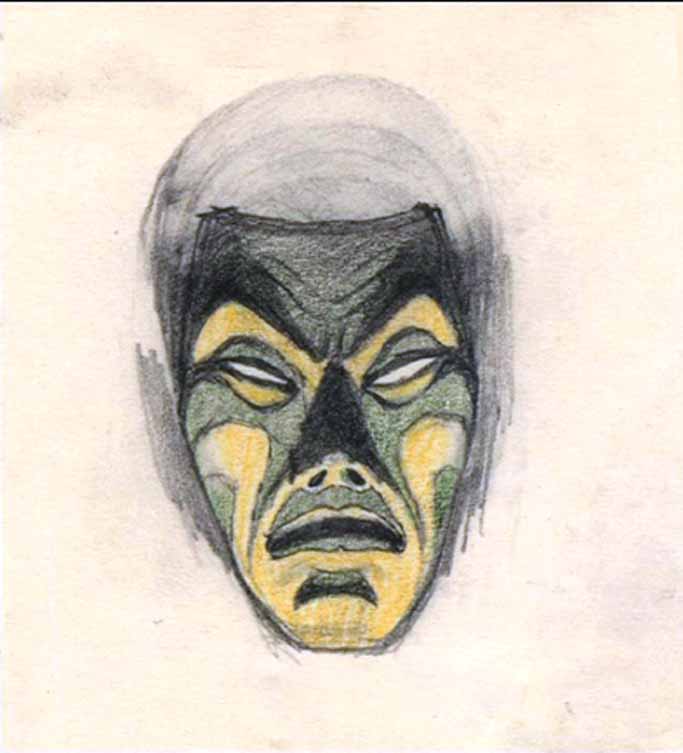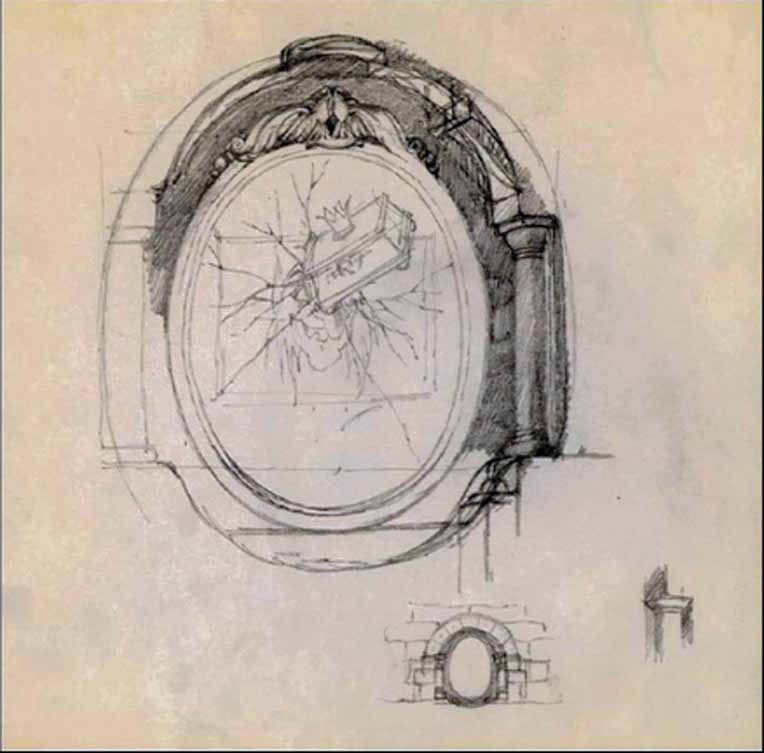Information
Full name: unknown
Age: unknown
Designers: Hugh Henesy (uncredited), Joe Grant, Albert Hurter, Ferdinand Horvath, Gustaf Tenggren
Animators: Wolfgang Reitherman
Voice actor: Moroni Olsen (uncredited)
Model: Hugh Henesy (uncredited)
Appears in sequences: 1B, 7A
Back to Cast

From the farthest space
Although this character appears in only two sequences of the film, he is the Deus ex-machina and the plot would not work without his short but crucial participation. The film opens with the Queen calling upon the slave in the magic mirror, suggesting that the magic being fulfills his duty against his will. The slave appears in a mixture of fire and smoke as if from the “darkness” evoked by the Queen.
No indication is given as to who he is and if he is even able to answer a different question than the one the Queen consistently asks. In any event, he seems to be a prisoner of a looking glass.
Interestingly, Snow White herself was supposed to have a mirror in her bedroom. This element was deleted since the character seems rather unconcerned with her looks, except briefly when she rearranges her hair before knocking on the cottage door, probably because she wants to make a good impression rather than an actual need to look pretty.
Design
The mirror is conspicuously placed in what looks like a richly but soberly decorated secret chamber. The mirror frame looks like a snake enhanced by the twelve signs of the zodiac carved in stone around it. The slave is a floating face, with no pupils, yet animator Wolfgang Reitherman managed to give it a unearthly presence with the help of model Hugh Henesy.
Although he was disappointed that his work was partly drowned in the distorted glass effect in the final film, the end result is unforgettable.


The magic mirror’s legacy
So iconic was this character that he was frequently used, mostly as a narrator, in TV productions, as soon as Walt Disney ventured in the medium. As early as 1950 in One Hour in Wonderland, Hans Conreid played the part in a cheeky tone and returned the year after that for The Walt Disney Christmas Show. Conreid reprised his role on the episodes All About Magic (1957), Magic and Music (1958) and Disney on Parade (1971). Of course, the mystic nature of the magic mirror made it a shoe-in for Halloween shows like Our Unsung Villains (1956), reedited into Disney’s Greatest Villains (1977) again with Conreid. Sherman Hemsley, then star of The Jeffersons, then played the part in the Golden Anniversary of Snow White and the Seven Dwarfs (1987). The episode Once Upon an Apple from The Wonderful World of Mickey Mouse shows a high-spirited mirror sporting Mickey Mouse ears and singing the Mickey Mouse Club theme song with the voice of Chris Diamantopoulos who also speaks for Mickey in the series.
On stage, the show Snow White — An Enchanting Musical begins by a giant mirror, voiced by Patrick Stewart. Cornel Richie, then Charles Hall, both played the magic mirror in the 1969 musical by Joe Cook.
In Wish (2023), the fate of the villain of the story, Valentino, may be an explanation of how the slave in the magic mirror came to be. In the Lego Disney Princess movie (2023), it is Snow White who consults the mirror, who replies with the voice of Corey Burton. In the 2025 remake of Snow White, the Queen actually breaks the mirror, prompting her own death, suggesting that the “magic” queen’s existance is somehow linked to that of her mirror. In early developpement of the original film, the Queen was also suposed to break the mirror in anger in sequence 7A by throwing her box, a plot twist also used in some book adaptations, although the Queen remained unaffected by this movement of anger. In the February 14, 1935 script of the opening scene, the mirror threatens the Queen: if she breaks the looking glass, she will turn into an old hag.
Other Productions
Appears in the following productions:
One Hour in Wonderland (1050)
The Walt Disney Christmas Show (1951)
Our Unsung Villains (1956)
All About Magic (1957)
Magic and Music (1958)
Snow White and the Seven Dwarfs (Live on stage) (1969)
Disney on Parade (1971)
Disney’s Greatest Villains (1977)
Golden Anniversary of Snow White and the Seven Dwarfs (1987)
Snow White — An Enchanting Musical (2004)
Lego Disney Princess – The Castle Quest (2013)
Once Upon an Apple (2021)
Snow White (2025)
Go to Sequels and references
